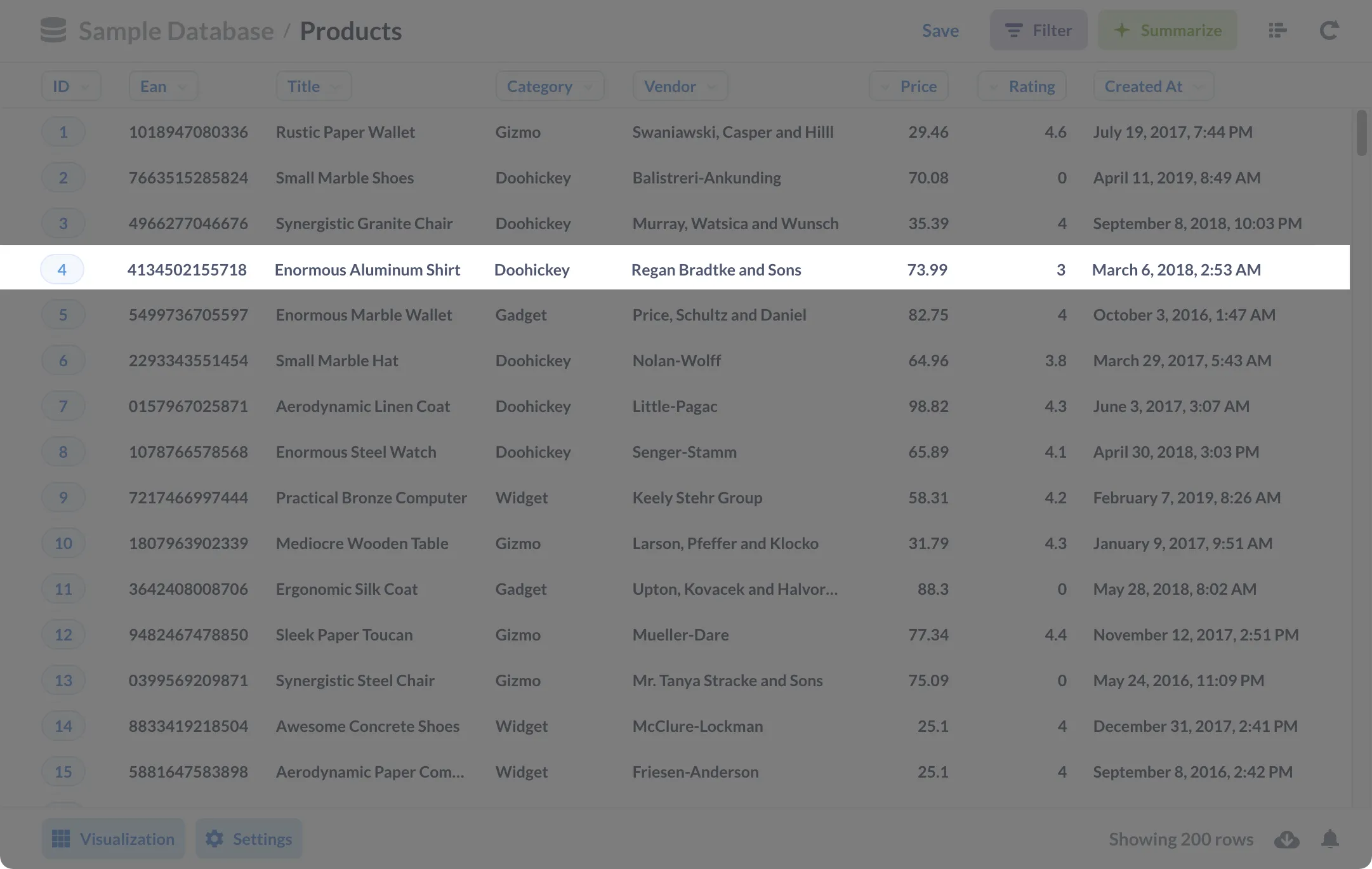What is a row?
Also known as
Record
Tuple
A row is a single group of related data within a table. Relational databases contain tables with rows and columns (also known as records and fields, respectively).
Columns are vertical, and hold a list of values all from the same field. Rows are your horizontal elements in a table. The values in a row belong to different fields, but all refer to a single unit (like a row that contains information about one customer or one order).
Row vs. record vs. tuple
Technically speaking, a row is the underlying logical grouping of related data in a table, while a record refers to that same grouping within the context of an application. When it comes to inserting, updating, or deleting in SQL, you’re dealing with rows, not records. This is a pretty subtle distinction though, and most people use these terms interchangeably. You’ll sometimes see tuple used as well, which is a mathematical term for the same concept.
Example row in Metabase
Figure 1 shows the Products table in Metabase’s Sample Database, with one row highlighted. This row contains information from several different fields, each value relating to one of the products in our inventory (in this case, the Enormous Aluminum Shirt).




